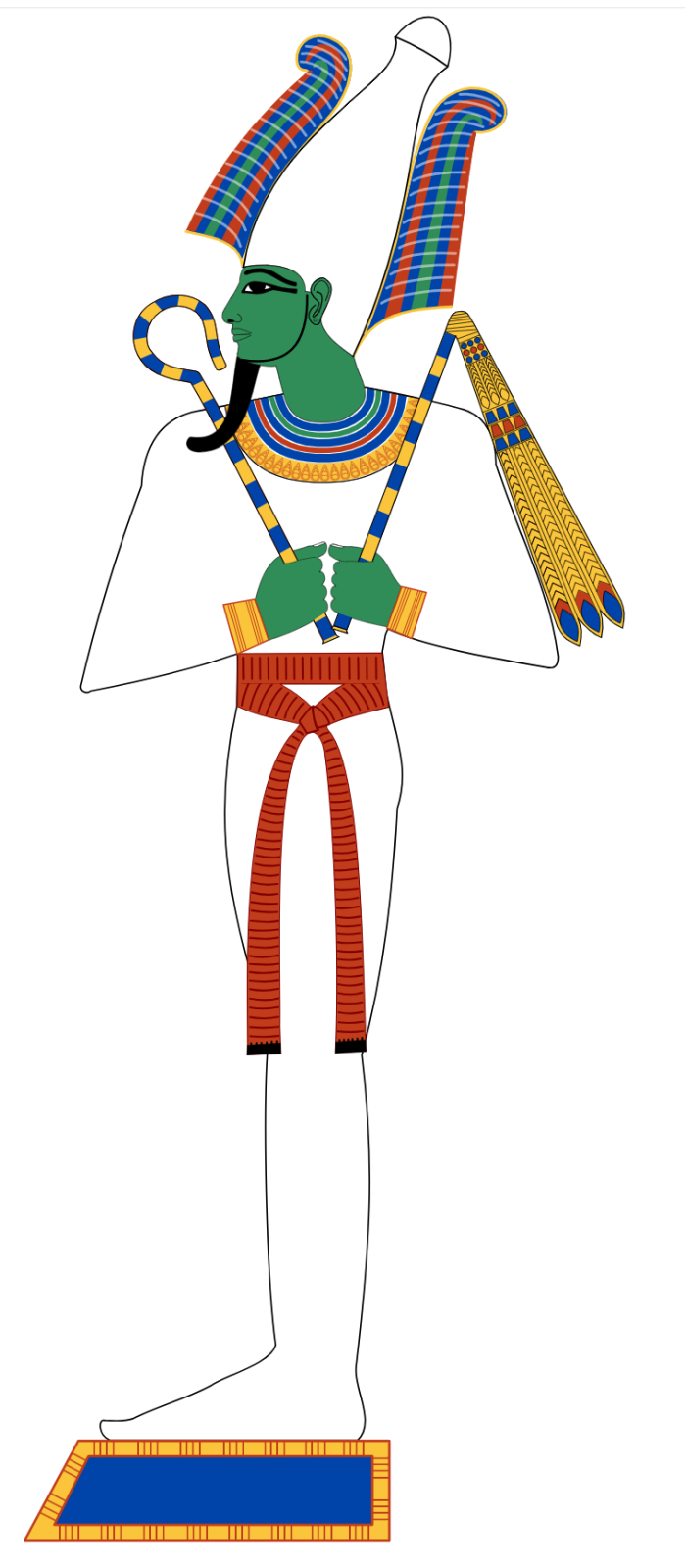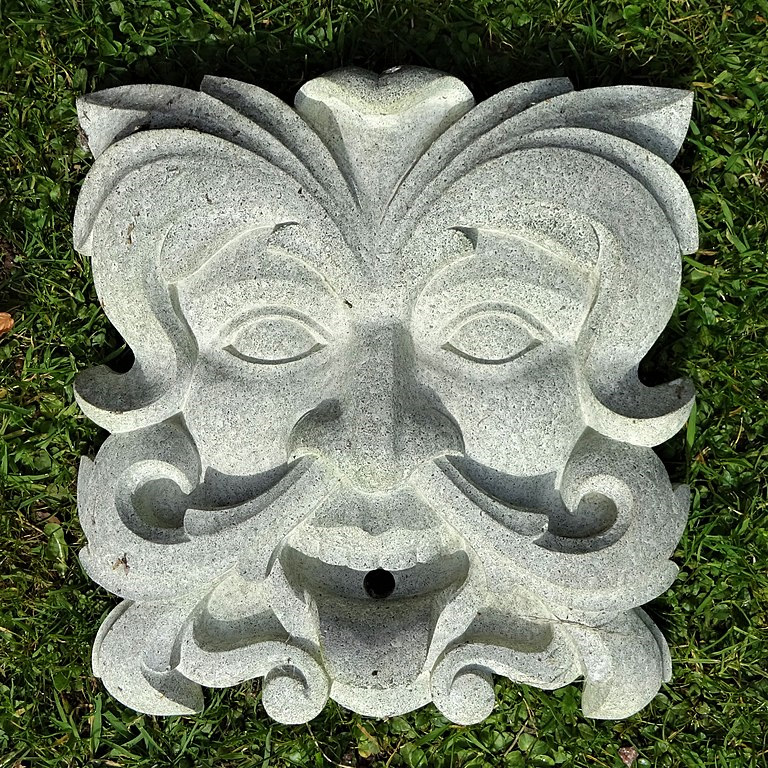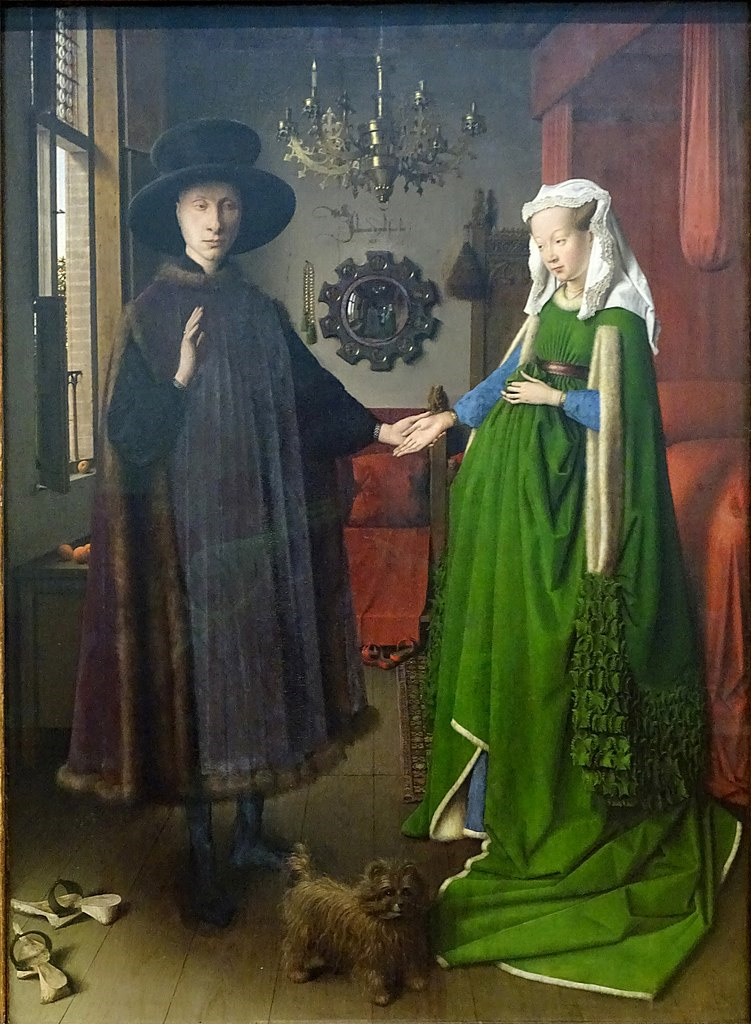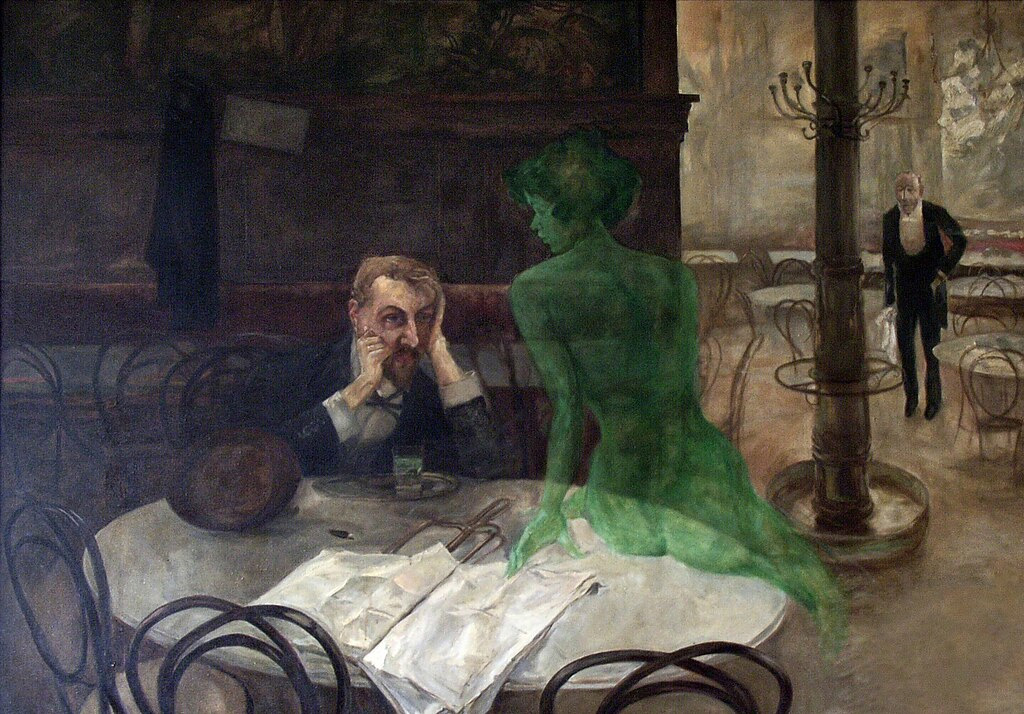Green Eyed Monster
Today we consider "Being Green". The University of Houston presents this series about the machines that make our civilization run, and the people whose ingenuity created them.
The first green flash of memory was a verdant paradise, our shared ancestral homeland. The green of chlorophyll is soothing, relaxing and subliminally safe.
In ancient Egypt the hieroglyph for green was a papyrus stalk; the Egyptian god Osiris was known for his green visage, the one who restored life. In Roman times lifelike glowing landscape murals were created using native Terra Verde mined from celadonite.

Osiris Photo Credit: Jeff Dahl, Wikimedia Creative Commons
In the Medieval era green was taboo. Dyer's guilds were strictly segregated: those tinting cloth blue or black were disallowed from red or yellow dyes. Double-dying a garment with blue woad, then yellow weld plants was strictly forbidden, on pain of severe punishment. Natural green foxglove dye was weak and fugitive, so rich green garments were rare.
The color green is found in many world religions. It is the symbolic color of Islam, and in many Moslem countries mosques and minarets are accented in green, which also appears in most modern Islamic flags. In Buddhism green represents harmony. In Christian England's cathedrals the Green Man was a mysterious stone figure with an acanthus leaf face, recently seen on the coronation invitations of King Charles III. Green is also the color of Catholic Ireland, the "Emerald Isle", and St. Patrick's Day.

Green Man Photo Credit: Rosser1954, Wikimedia Creative Commons

Arnolfini Portrait Photo Credit: Jane Van Eyck, Wikimedia Creative Commons
The color green has not always been benevolent. In the 18th century Swedish chemist Carl Scheele discovered a luminous yet toxic green pigment derived from arsenic. Used in clothing, wallpaper, and even confections, it poisoned countless unfortunate people, perhaps even Napolean, before it fell out of favor. Later, during the Impressionist era, the French herbal liquor Absinthe was nicknamed the "Green Fairy", for the delusions seen by its hapless addicts. Literary references to green as evil were also rife, such as the "Green-Eyed Monster" of envy; dragons and the devil were often portrayed as green in parochial art.

Absinthe Drinker, Oliva Photo Credit: Viktor Oliva, Wikimedia Creative Commons
In Germanic languages Grene connotes growth, the same as the Latin root Viridis. In modern times, green has been rehabilitated, beginning in 1938 with phthalocyanine green, a brilliant, stable and safe green pigment. Green now stands for the fecundity of the Earth through the Sustainability movement, and environmentally-conscious political parties. Green gaming tables and operating rooms provide visual comfort. Gifted gardeners have "Green Thumbs". "The Grass is always Greener on the Other Side..." The green wreath has come full circle.
I'm Celeste Williams for the University of Houston where we are interested in the way inventive minds work.
(Theme music)
Pastoureau, Michel, Green, The History of a Color, Princeton University Press, Princeton NJ, 2019.
Jennings, Simon, Artist's Little Book of Color, Firefly Books, 2017.
Adams, Sean, Designer's Dictionary of Color, Abrams, New York, NY, 2017.
Engines of Our Ingenuity, No. 3241, Hooker's Green by Dr. Karen Fang.
1988-2023 Copyright © The Engines of Our Ingenuity.
This episode was first aired July 11, 2023.